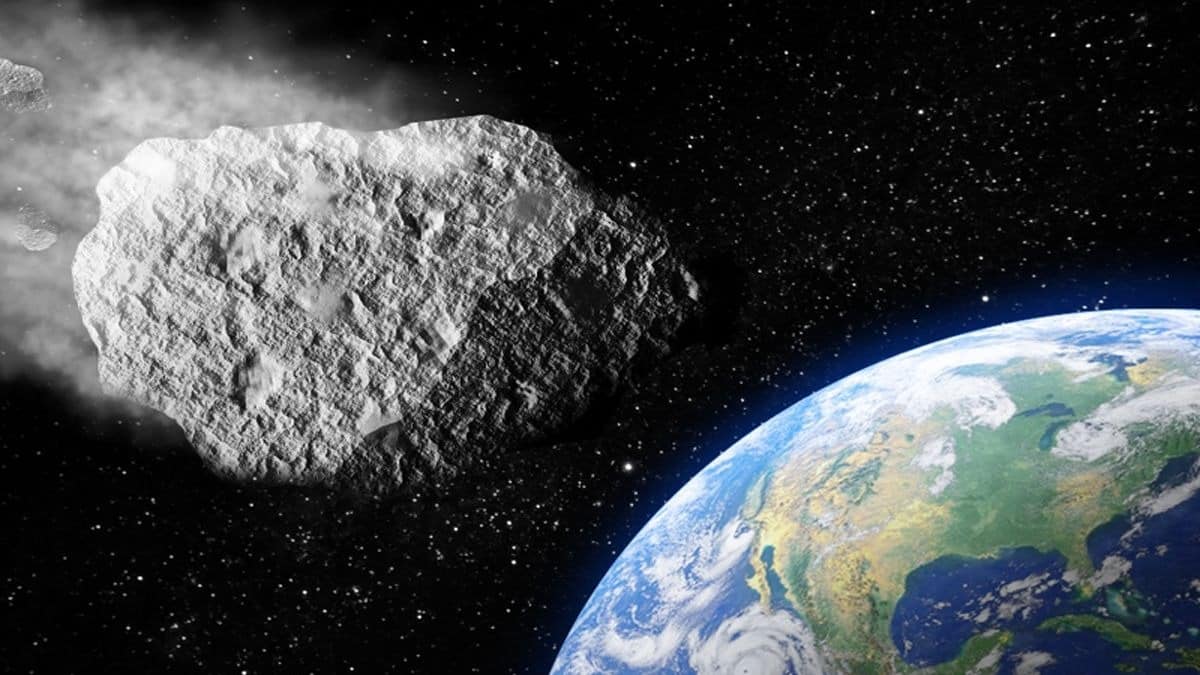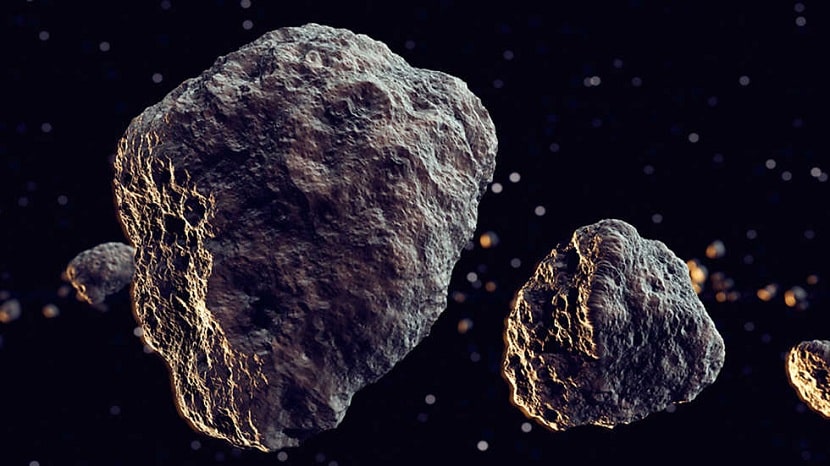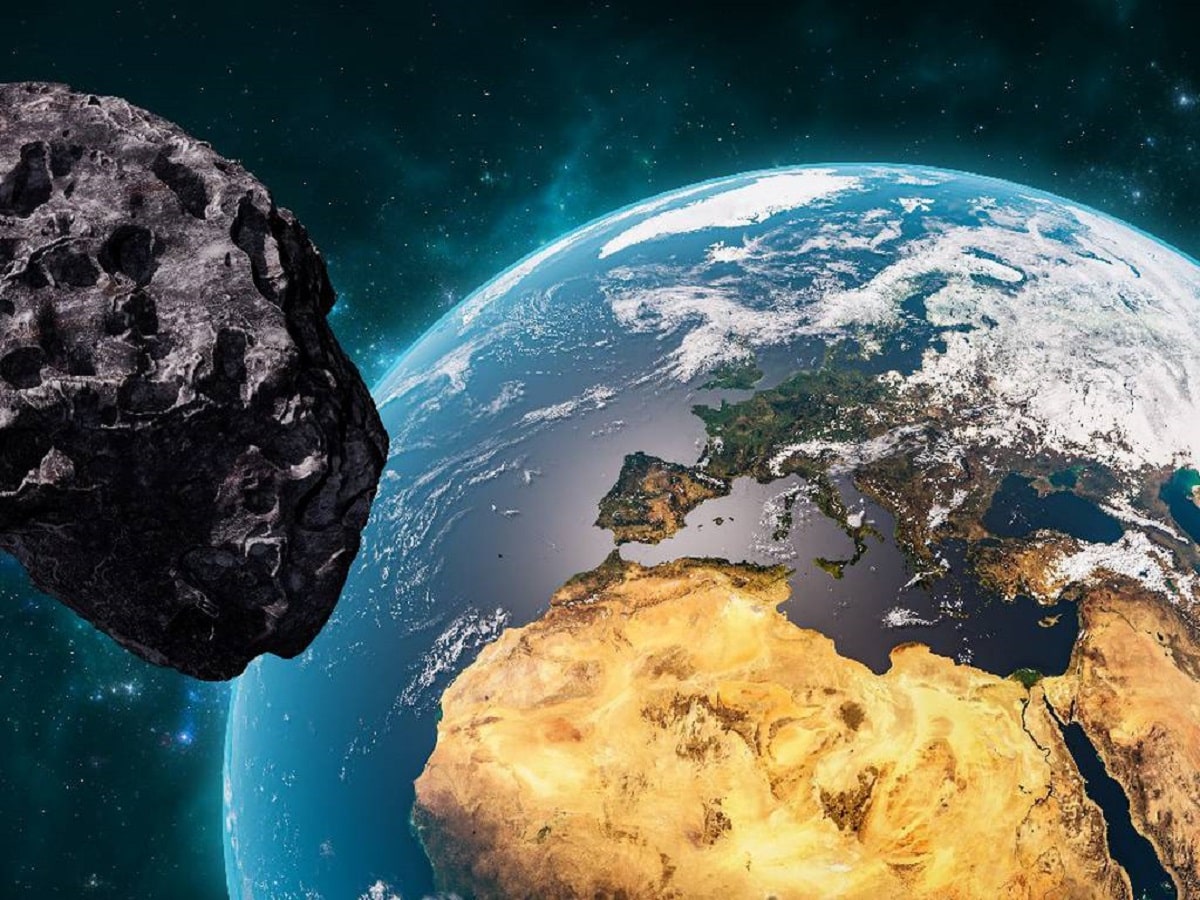
We know that both the solar system and the rest of the universe have millions of asteroids. However, a potentially dangerous asteroid It is called when its trajectory can pass through our planet and end up colliding. For NASA to name an asteroid as potentially dangerous, it must meet certain requirements and have a real danger so as not to fall into alarmism.
For this reason, we are going to dedicate this article to telling you how different a potentially dangerous asteroid needs to be and what its characteristics are.
what is an asteroid

An asteroid is nothing more than a rocky object that orbits around the sun, and although it is not the same size as a planet, its orbit is similar. There are many asteroids orbiting our solar system. The vast majority of them form what we know as the asteroid belt. This region lies between the orbits of Mars and Jupiter. Like the planets, their orbits are elliptical.
Not only do they exist in this belt, they can also be found on the paths of other planets. This means that the rocky object travels the same path around the sun, but nothing to worry about. You might think that if an asteroid were in the same orbit as our planet, it would collide and cause a catastrophe. This is not the case. There is nothing to worry about because they do not collide.
They usually travel at the same speed around asteroids that are in the same orbit as the planet. Therefore, they will never meet. To do this, either the Earth must move more slowly or the asteroid must speed up. This doesn't happen in outer space unless there is an outside force to do it. Meanwhile, the laws of motion are governed by inertia.
Types of asteroids

These asteroids came from the formation of the solar system. As we have seen in some articles, the solar system was formed about 4.600 billion years ago. This happens when a large cloud of gas and dust collapses. When this happens, most of the material falls into the center of the cloud, forming the sun.
The rest of the matter became planets. Nevertheless, objects in the asteroid belt have no chance of becoming planets. Because asteroids form in different places and conditions, they are not the same. Each one formed at a different distance from the sun, which meant different conditions and compositions.
We discovered that the objects are not round but have jagged and irregular shapes. These are formed by successive impacts with other objects until they become that.
Others are hundreds of kilometers wide and huge. They are smaller, like pebbles. The vast majority of them are made of different types of rocks. Many of them contain large amounts of nickel and iron.
Potentially dangerous asteroid

A potentially hazardous asteroid is one near Earth with a absolute magnitude of 22 or greater with a minimum orbital intersection with Earth of 0,05 au or less. This distance is about one twentieth of the average distance between the Earth and the Sun, and is believed to be the largest possible magnitude of orbital disturbance that could lead to a collision on a 100-year time scale. Potentially hazardous asteroids make up about 20 percent of near-Earth asteroids, the largest of which is Toutatis.
These objects are considered to be at risk of colliding with Earth, causing damage ranging from small localized destruction to mass extinction. The US Sentry surveillance system detects and monitors all known PHAs, as well as all other objects that are potentially dangerous to Earth.
falling asteroids rocky or iron over 50 m in diameter, with an average interval of one hundred years, can produce local catastrophes and tsunamis. Every few hundred thousand years, an asteroid larger than a kilometer causes a global catastrophe. In the latter case, debris from the impact is spread in the Earth's atmosphere in such a way that plant life suffers from acid rain, partial interruption of sunlight, and fires (nuclear winter) from hot debris falling to the ground after the collision. . These effects have occurred many times in the past and will continue to occur in the future.
Some of these are thought to be the cause of mass extinctions, such as the KT extinction that killed the dinosaurs or the Permian giants that killed more than 90% of the species and creatures. Therefore, discovering these objects and studying them to determine their size, composition, structure and trajectory is a prudent activity.
Scale of a potentially dangerous asteroid
To classify the dangerousness of these objects, the Turin Scale was established and determined as follows:
- 0 level: Zero collision probability or much lower than the probability that a random object will reach Earth in the next few decades. It also applies to small objects that disintegrate on entering the Earth's atmosphere.
- 1 level: The probability of collision is very low, similar to the probability that a random object will reach Earth in the next few decades.
- 2 level: Low probability of collision.
- 3 level: Collision chance capable of dealing more than 1% local damage.
- 4 level: Collision chance capable of dealing more than 1% damage in the area.
- 5 level: High probability collisions can cause area damage.
- 6 level: A high probability collision can lead to a global catastrophe.
- 7 level: Very high probability of collision, capable of causing a global catastrophe.
- 8 level: shockproof, capable of causing local damage. This should happen every 50 to 1,000 years.
- 9 level: Collisions are guaranteed, capable of regional damage. This should happen every 1.000 to 100.000 years.
- 10 level: a collision is certain, which could lead to a global climate catastrophe. This should happen every 100.000 years or more.
When a new object is detected, it has a base rating of zero, which can be raised or lowered to lower levels as the investigation progresses. According to this classification, all currently known objects have a hazard classification of zero.
I hope that with this information you can learn more about the potentially dangerous asteroid and its characteristics.
Subject like all quite interesting, I allow myself to state how immense, beautiful and spectacular the Universe is, it also contains latent dangers for our Blue Planet... Greetings